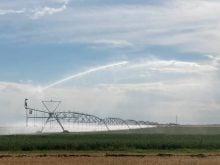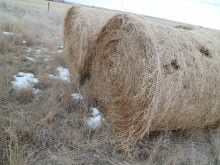QUEBEC CITY – Safety educators and manufacturers should continue to concentrate on tractors, which cause almost half of all farm accident deaths.
Other prevention efforts should focus on children and older farmers, says a report by the Canadian Agricultural Injury Surveillance Program. Its recommendations were in a report presented at the recent national health and safety conference here. It compared all 590 farm deaths in the 10 provinces between 1991 and 1995 and found patterns.
The report notes the fatality rate has stabilized but farming remains the most hazardous occupation in North America, especially for men over 60.
Read Also

Canada-U.S. trade relationship called complex
Trade issues existed long before U.S. president Donald Trump and his on-again, off-again tariffs came along, said panelists at a policy summit last month.
The report, the first to include all of Canada in one standardized study, urged continued funding of the accident reporting system headquartered at Queen’s University in Kingston, Ont.
The recommendations were supported by the Canadian Coalition for Agricultural Safety and Rural Health, a four-year-old organization that controls money given by Agriculture Canada in the farm safety effort. Among the $1 million it will allocate in the coming year to 10 national projects and 28 provincial ones, $90,000 will go to Saskatchewan, $85,867 to Alberta, $38,559 to Manitoba and $35,804 to British Columbia. Last year, similar funding enabled the provincial safety groups to produce child oriented safety programs and coloring books, worker training, first aid courses, recreational vehicle instruction and safety commercials.
Among the findings: Fatalities are highest in Eastern Canada; the worst months are July through September; the worst days for accidents are Monday and Tuesday; that after machinery and animals, the most common causes of farm deaths are drownings, recreational vehicles and traffic accidents; and that 56 percent of the deaths happen to the farm owner-operator, but children are the next largest group at nine percent.
Children were a focus of the conference.
Pat Morgan, an Ontario delegate, said, “every day thousands of young children wake up on an industrial work site – the farm.”
She said funding is needed for initiatives that emphasize to parents the need for child care so they do not take their children with them on farm chores.
Dr. Will Pickett, of the surveillance program, said he is working on a project with American and Mexican farm families to develop guidelines for what age children are capable of doing various chores. Pickett told conference delegates the group hopes to release its guidelines by 2001.
But until farmers are willing to pay for child safety, there will be accidents, said Dr. Steven Olenchock, director of the National Farm Medicine Centre in Wisconsin.
“Agricultural health and safety is really about protecting the human assets …, an investment. Just as in other operations on the farm, it should be part of the annual planning process.”
Olenchock said in a later interview that: “I don’t think we’ve made that turn yet” in thinking of human assets as important.
Like their Canadian counterparts, American farmers are aging and Olenchock said he expects more accidents because of their slower reflexes, weaker vision and arthritic joints.














